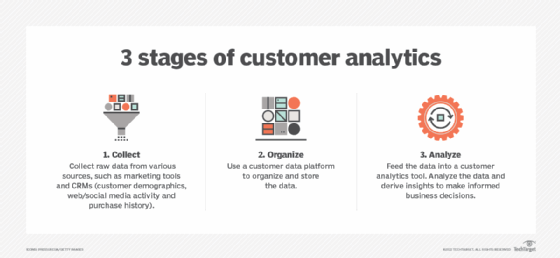microtargeting
What is microtargeting?
Microtargeting (also called micro-niche targeting) is a marketing strategy that uses consumer data and demographics to identify the interests and preferences of specific individuals or small groups to send targeted advertisements that align with their interests. An important goal of a microtargeting initiative is to know the target audience so well that messages get delivered through the target's preferred communication channel, communication style or even appear to be an organic recommendation that they are interested in.
How does microtargeting work?
Microtargeting relies on the widespread collection, retention and analysis of data points about an individual. These datapoints can come from various places, including browsing history, purchases, public records and other tracking data. This data is often bought and sold between companies to create a more complete dataset about an individual.
By analyzing this data, it is possible to build an understanding about a person's likes, dislikes and preferences. This is often used to create a persona, psychological profile or rough outline of a person.

The ability to track people to determine their preferences has become quite advanced. Traditional web signals are used to gather information from sources such as link clickthrough, tracking cookies and tracker pixels. New forms of information can come from demographic research, interest profiling, social media tracking, advertisement engagement and browser fingerprinting.
This individualized view is then used to advertise to each person in a way that will most appeal to them. In traditional advertising this takes the form of targeting a demographic that is likely to purchase a product and advertising to them. Microtargeting can take this one step farther and layer on messaging that is likely to catch the person's interest in a manner they are likely to interact with.

Microtargeting works with predictive modeling and predictive analytics. The predictive model is used to determine a person's intent and advertise to them appropriately. It works hand in hand with content personalization to appeal to the viewer. In the near future, it may even work with generative AI to create a unique advertisement for each individual.
As an imagined example, think of an advertising campaign for an electric car company. A traditional targeted campaign might use simple signals, such as play an electric car advertisement on YouTube for middle-aged men making more than $100,000 a year who own a home. Microtargeting gets even more detailed. For example, knowing that this person does not watch YouTube ads but will look at Instagram advertisements. It also takes into account that they are cost conscious, so it will play ads that focus on potential savings and tax rebates instead of focusing on environmental impact or luxury.
Microtargeting has become popular for political campaign advertising. It can build a database of every voter in a country and then build up an individualized profile for each person. That profile is used to determine what the best way is to contact the voter and what political messaging they will engage with.
Microtargeting controversy
The practice of microtargeting has come under fire from many angles. Human rights groups, consumer protection groups and privacy advocates have raised alarm about the widespread data collection and retention required for microtargeting. This data is often collected under obscure terms of service or user agreements that the average consumer cannot understand.
The scandal surrounding Cambridge Analytica brought the prevalence of microtargeting into the public consciousness. Cambridge Analytica used microtargeting to advertise during the 2016 U.S. presidential campaign and the referendum for the U.K. to leave the E.U., among other campaigns. They claimed to have up to 5 thousand datapoints on millions of people. Much of this data was acquired using a Facebook-connected app that harvested the person's data and the information of all their friends without clearly stating that this data would be collected and used for advertising.
The goal of all advertising is to influence and change people's thinking and influence their actions. But microtargeting has proven particularly powerful for this. The combination of big data and psychological profiling on an individual level has led to microtargeting firms claiming they know the target audience better than they know themselves. They may even use negative advertising, such as reinforcing a negative body image for youths or fearmongering during a political campaign.
Many countries are enacting data protection laws to fight against this type of advertising. Such laws may limit how data is collected or used. The European Union has passed legislation that effectively bans microtargeting for political campaigns.
Check out five tips for creating customer journey maps from buyer personas and four ways to create an effective personalization strategy. Learn how to manage cookie privacy in the enterprise, and explore six ways to build customer loyalty for your business.








